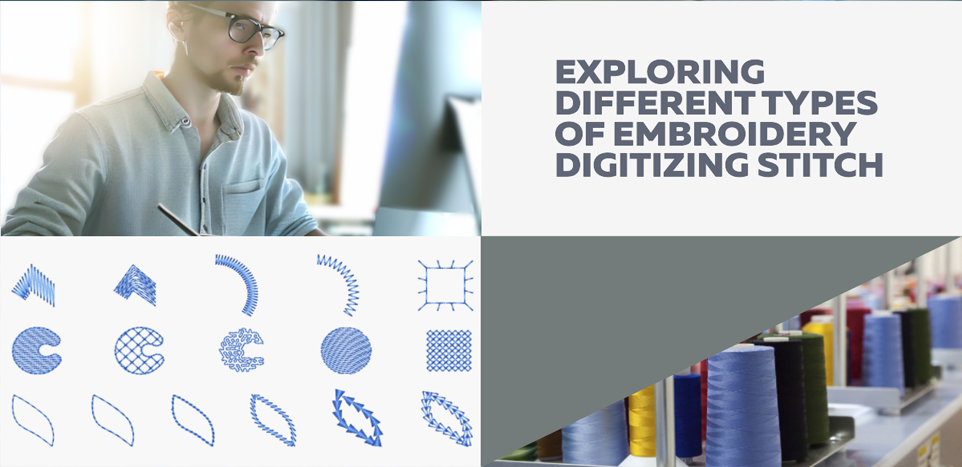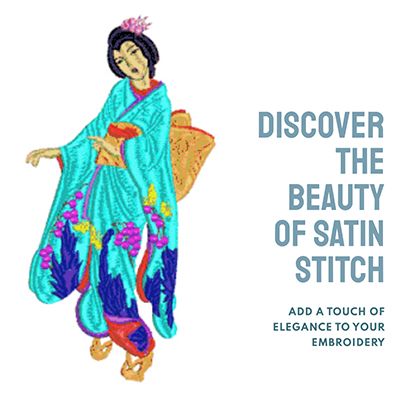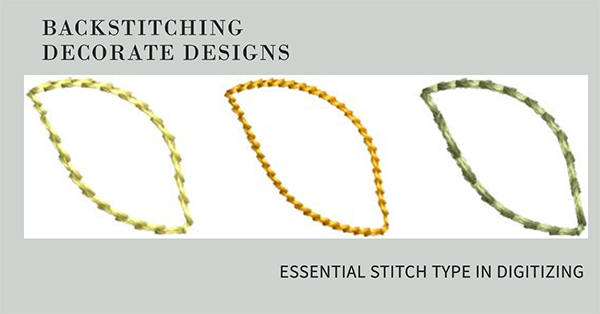
Exploring Different Types of Embroidery Digitizing Stitch
Embroidery digitizing is a captivating art form that blends traditional craftsmanship with modern technology. It's a creative process that involves converting artwork into machine-readable embroidery files, but the heart of embroidery digitizing lies in the choice of stitches. These stitches are the building blocks that bring designs to life on fabric. In this blog post, we'll explore the fascinating world of different types of embroidery digitizing stitches, each with its unique characteristics and applications.
1. Running Stitch
The running stitch is one of the simplest and most fundamental embroidery stitches used in digitizing. It consists of a single, straight line of stitches and is often employed for outlining and adding fine details to designs. Running stitches are perfect for creating crisp, clean lines and are commonly used in lettering and monogramming.
2. Satin Stitch

Satin stitches are known for their smooth, glossy appearance. They are densely packed parallel stitches that create a solid, shiny surface. Satin stitches are excellent for filling large areas and achieving a polished look. They add a touch of luxury to designs and are often used for text, logos, and intricate patterns.
3. Fill Stitch
The fill stitch is a versatile stitch type that's ideal for covering larger areas with solid color. It consists of rows of closely spaced parallel stitches that create a solid fill. Digitizers can adjust the angle and density of fill stitches to achieve different effects, from a smooth surface to a textured appearance. Fill stitches are commonly used for backgrounds and larger design elements.
4. Stippling Stitch
Stippling stitches, also known as seed stitches, are tiny, scattered stitches that create a dappled or speckled texture. They are often used for adding texture and dimension to designs, such as simulating the look of fur, foliage, or rough surfaces. Stippling stitches can vary in density and spacing to achieve the desired effect.
5. Backstitch

The backstitch is a strong, versatile stitch used for creating solid lines and contours. It involves stitching backward to create a continuous line. Backstitching is frequently employed for outlining and adding fine details to designs, making it an essential stitch type in digitizing intricate artwork.
6. Chain Stitch
The chain stitch is a decorative stitch that resembles a series of linked loops. It adds a charming, handmade quality to designs and is often used for decorative borders, lettering, and embellishments. Chain stitches can vary in size and spacing, allowing for creative customization.
7. Tack Down Stitch
Tack down stitches are utilitarian stitches used to secure fabric or other materials in place before adding other decorative stitches on top. They provide stability to the design and prevent shifting during the embroidery process. Tack down stitches are typically hidden beneath the final design but play a crucial role in ensuring the quality of the finished product.
8. Bean Stitch
Bean stitches, also known as triple stitches, consist of three closely spaced parallel lines. They add a textured, hand-stitched appearance to designs and are commonly used for outlining and embellishing. Bean stitches can be adjusted to create varying levels of thickness and texture.
9. Zigzag Stitch
Zigzag stitches are a versatile stitch type used for both decoration and structural purposes. They consist of a series of diagonal stitches that form a zigzag pattern. Zigzag stitches are often used for securing edges, preventing fraying, and adding decorative borders to designs.
10. Feather Stitch

The feather stitch is a delicate, ornamental stitch that resembles a row of small arches. It adds a whimsical, lacy quality to designs and is often used for floral motifs, borders, and decorative accents. Feather stitches can be customized by adjusting the size and spacing of the arches.
11. Tatami Stitch
Tatami stitches, also known as stepped fill stitches, create a textured, woven appearance. They consist of rows of closely spaced, staggered stitches that resemble a woven fabric. Tatami stitches are commonly used for backgrounds and textured design elements, adding depth and dimension to embroidery.
12. Motif Stitch
Motif stitches are decorative, often intricate stitches used for creating focal points in designs. They are highly customizable and can take on various forms, from floral motifs to intricate patterns. Motif stitches are perfect for adding a touch of elegance and complexity to embroidery projects.
Conclusion
Embroidery digitizing stitches are the artistic palette of digitizers, allowing them to transform digital designs into stunning embroidered creations. Understanding the characteristics and applications of different stitch types is essential for achieving the desired look and feel in embroidery projects. Whether you're creating custom clothing, personalized gifts, or branding materials, mastering the art of embroidery digitizing stitches will help you bring your creative vision to life with precision and style. Explore these stitches,
experiment with combinations, and watch your embroidery designs flourish into works of art.

0 Comments